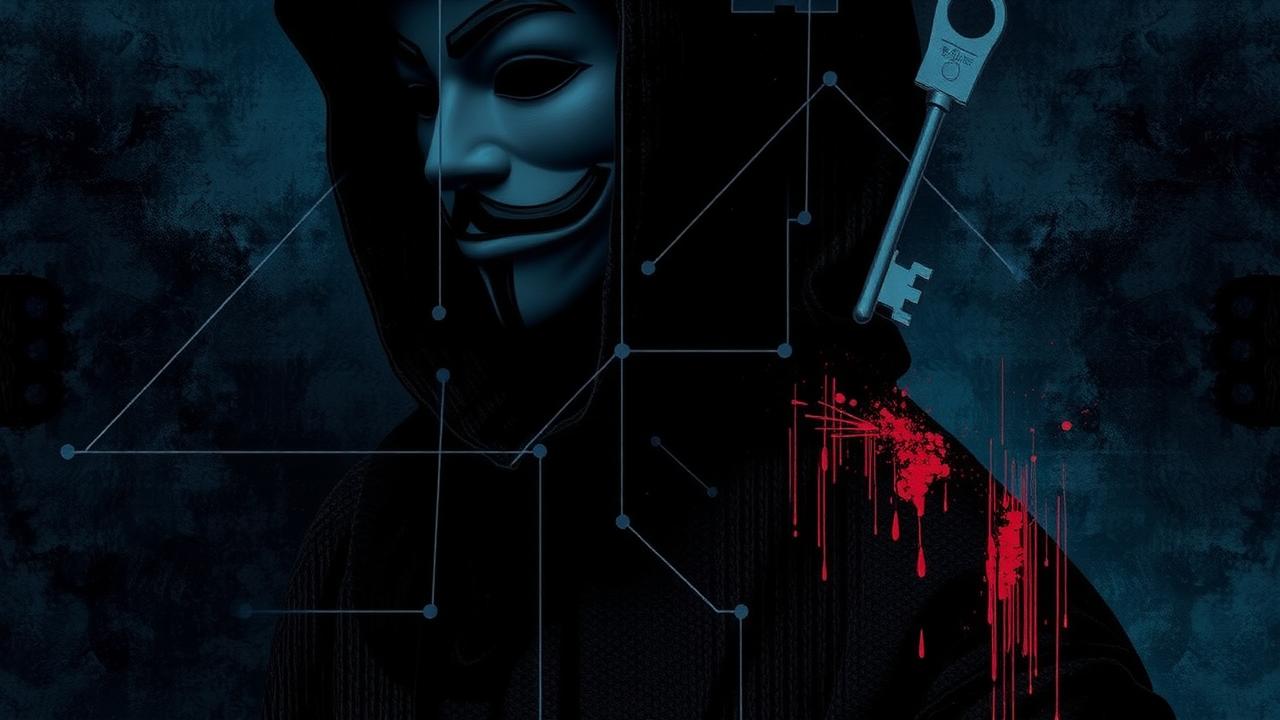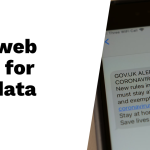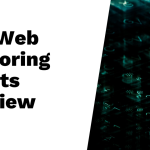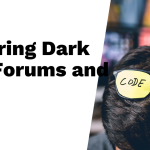Dark web monitoring is a process that helps individuals and organizations find if their sensitive data has leaked on hidden parts of the internet. It uses special tools that scan dark web sites, forums, and marketplaces almost in real-time to detect stolen information like passwords, financial details, or personal identifiers. Since the dark web is not accessible through normal browsers and is often used for illegal activities, monitoring becomes important to catch early signs of breaches. Alerts notify users quickly so they can act fast to reduce damage. For beginners, understanding these basics is essential before setting up an effective monitoring system.
Table of Contents
- What Is Dark Web Monitoring and How It Works
- Understanding the Dark Web and Its Risks
- Types of Data Found on the Dark Web
- How Personal Information Ends Up on the Dark Web
- Who Should Use Dark Web Monitoring
- Consequences of Ignoring Dark Web Data Exposure
- Features to Look for in Dark Web Monitoring Tools
- Steps to Set Up Dark Web Monitoring
- Best Practices for Beginners to Stay Protected
- Actions to Take If Your Data Is Found on the Dark Web
- Limitations of Dark Web Monitoring and What to Expect
- Additional Insights on Dark Web Threats and Trends
- Recommended Dark Web Monitoring Services and Tools for Beginners
- Frequently Asked Questions
14.1. What exactly is dark web data monitoring and why should beginners care about it?
14.2. How do I safely start monitoring dark web data without putting myself at risk?
14.3. What types of information commonly appear on the dark web that I should watch for?
14.4. Can dark web data monitoring help if my personal information was stolen a long time ago?
14.5. Are there limits to what dark web data monitoring can find for a beginner user?
What Is Dark Web Monitoring and How It Works

Dark web monitoring is the process of scanning hidden parts of the internet, known as the dark web, to find stolen or leaked personal and corporate data. It uses specialized software designed to access sites, forums, and marketplaces that regular browsers cannot reach. These tools continuously search for sensitive information like login credentials, personal identifiers, and financial details by tracking specific keywords or data patterns tied to an individual or organization. When the software detects matching data, it verifies its authenticity and risk level, then sends alerts to notify users of potential exposure or threats. This monitoring happens in near real-time, allowing for quick responses to limit damage from data leaks. While dark web monitoring provides valuable intelligence and early warnings, it requires constant updates to keep up with evolving dark web activities and works best as part of a broader cybersecurity strategy rather than as a standalone defense.
Understanding the Dark Web and Its Risks
The dark web is a hidden part of the internet that you can only access using special browsers like Tor, which focus on anonymity. Unlike regular websites, it’s not indexed by search engines such as Google, making it difficult to find without knowing where to look. This area hosts a variety of marketplaces, forums, and communication channels, many of which are used for illegal activities like selling stolen data, hacking tools, malware, and other illicit services. However, it’s important to note that not everyone on the dark web is a criminal; some users seek privacy or use it as a platform for whistleblowing where they can share sensitive information without revealing their identity. Because of its anonymous nature, the dark web poses significant challenges for law enforcement and cybersecurity professionals trying to track or remove stolen data. Data leaked or traded here can stay accessible indefinitely, and the environment is always changing with new sites and actors appearing regularly. Communications are often encrypted or kept private to avoid detection, which adds another layer of complexity. For beginners, understanding these risks is key to appreciating why monitoring the dark web matters and how it can help protect personal or organizational information from being exploited.
Types of Data Found on the Dark Web
The dark web hosts a wide range of stolen or leaked information that criminals trade for profit or misuse. One of the most common types of data found there is compromised usernames and passwords, including those linked to both personal and corporate accounts. These credentials allow attackers to break into email, social media, or business systems. Personally identifiable information (PII) is also frequently available, such as social security numbers, birth dates, and home addresses. This info can be used for identity theft or fraud. Financial data, including credit card numbers, bank account details, and payment information, is highly sought after for unauthorized transactions.
Another valuable asset on the dark web is answers to security questions, which hackers use to reset or bypass account security measures. Healthcare records and insurance information appear as well, often exploited for medical identity theft or fraudulent insurance claims. Access badges or credentials, whether digital or physical, sometimes surface, enabling unauthorized entry into restricted facilities.
Corporate data is also traded, including intellectual property, trade secrets, and internal operational details that can harm a company’s competitive edge if exposed. Brand impersonations and domain spoofing information are used to conduct phishing scams and deceive customers. More comprehensive data packages called “fullz” bundle multiple types of personal information, increasing their value by providing a complete identity profile for criminals to exploit. Often, data sets combine several categories, making these packages more dangerous because they enable a wider range of fraudulent activities.
| Data Type | Description | Common Examples |
|---|---|---|
| Compromised Credentials | Usernames and passwords exposed from personal and corporate accounts | Corporate emails, subscription logins |
| Personally Identifiable Information (PII) | Information that can identify an individual | Names, birth dates, social security numbers, addresses |
| Financial Information | Sensitive financial data used for fraud or theft | Credit card numbers, bank account details, payment info |
| Security Question Answers | Responses that allow resetting or bypassing account security | Mother’s maiden name, pet’s name |
| Healthcare Information | Medical records and insurance details sold for identity theft | Medical history, insurance policy numbers |
| Access Badges | Credentials enabling unauthorized facility or system access | Digital badges, physical ID cards |
| Corporate Data | Company intellectual property and trade secrets | Internal documents, proprietary processes |
| Brand Impersonations | Information used in phishing and fraud | Domain spoofing, fake brand accounts |
| Full Identity Packages (Fullz) | Comprehensive bundles of personal data sold together | Combined PII, credentials, financial data |
| Data Combinations | Multiple data types grouped to increase value to criminals | Bundles of credentials, PII, financial info |
How Personal Information Ends Up on the Dark Web
Personal information often appears on the dark web through a mix of cyberattacks and careless practices. Large-scale data breaches at companies or online services expose user data, sometimes publicly or directly to criminals who then trade or sell it. Phishing scams remain common, tricking people into handing over login credentials or sensitive details through deceptive emails or messages. Malware infections and botnets can silently steal data straight from infected devices without the user knowing. Using unsecured or public Wi-Fi networks also poses a risk, as attackers can intercept data while it’s being transmitted. Attackers exploit software vulnerabilities and security flaws to gain unauthorized access to protected information, widening the exposure. Insider threats add another layer of risk: employees or contractors may leak data either intentionally or by accident. Third-party vendors or supply chain partners with weaker security can become entry points, exposing connected data to criminals. Once stolen, data can be sold multiple times, spreading across various dark web marketplaces and forums. Automated scraping tools gather publicly available information from social media or websites and combine it with stolen data to build detailed profiles. Weak or reused passwords make account takeovers easier, increasing the chances that sensitive information gets leaked. All these factors contribute to how personal data moves from everyday environments into the hidden corners of the dark web where criminals exploit it.
Who Should Use Dark Web Monitoring
Dark web monitoring is useful for a wide range of users who want to stay ahead of potential threats. Individuals concerned about protecting their personal information and avoiding identity theft can benefit from it, especially if they’ve experienced data breaches or suspicious activity. Small businesses that handle client data and process financial transactions should consider monitoring to catch early signs of cyber threats before they escalate. Large enterprises, particularly those with valuable intellectual property or sensitive customer data, need dark web monitoring to safeguard their assets and maintain trust. Organizations subject to regulations like GDPR, HIPAA, or PCI DSS use it to stay compliant and prevent costly penalties. Companies that work closely with third-party vendors or have complex supply chains also find it valuable for identifying risks from partners. Financial institutions and healthcare providers face frequent cyberattacks and can gain critical insights by monitoring dark web activity. Government agencies managing confidential or classified information rely on these tools to detect potential leaks. E-commerce sites, vulnerable to account takeovers and payment fraud, use monitoring to protect both their customers and their reputation. Educational institutions, which store sensitive student and staff records, can use dark web monitoring to prevent unauthorized data exposure. Overall, anyone worried about data leaks or identity fraud in today’s digital world should consider dark web monitoring as part of their security strategy.
- Individuals who want to protect their personal information from misuse and identity theft
- Small businesses handling client data and financial transactions seeking early threat alerts
- Large enterprises with valuable intellectual property or sensitive customer information
- Organizations subject to regulatory requirements like GDPR, HIPAA, or PCI DSS
- Companies wanting to limit risks from third-party vendors and supply chain breaches
- Financial institutions and healthcare providers facing frequent cyber threats
- Government agencies managing confidential or classified data
- E-commerce sites vulnerable to account takeovers and payment fraud
- Educational institutions protecting student and staff records
- Anyone concerned about data leaks or identity fraud in a digital environment
Consequences of Ignoring Dark Web Data Exposure
Ignoring dark web data exposure can lead to serious and lasting damage. When sensitive information leaks, it opens the door to identity theft, fraud, and financial loss for both individuals and organizations. Stolen credentials let hackers break into accounts, causing disruptions to operations that may take significant time and resources to fix. Attackers behind ransomware often use exposed data to craft more effective, targeted attacks, increasing the chances of success. Beyond the immediate financial impact, companies face reputational harm when breaches become public, eroding customer trust and loyalty. This loss of confidence can result in fewer clients and a weakened market position. Legal consequences also loom large, as failure to protect customer data can lead to hefty fines and penalties under regulations like GDPR or HIPAA. Additionally, undetected data exposure means attackers have more time to exploit information, making recovery longer and more costly. Internal investigations and response efforts pull focus away from core business activities, draining resources and productivity. If breaches happen repeatedly, the cumulative effect can cause permanent damage to customer and stakeholder relationships, along with a competitive disadvantage. Overall, neglecting dark web monitoring and data exposure risks sets the stage for a chain reaction of financial, operational, and reputational setbacks that are avoidable with timely action.
Features to Look for in Dark Web Monitoring Tools
When choosing a dark web monitoring tool, it’s important to look for comprehensive scanning abilities that cover a wide range of sources, including both public and private marketplaces, forums, and chatrooms. Real-time alerting is essential, with flexible options like email, SMS, or app notifications to ensure you can respond quickly when a threat is detected. Customizable dashboards help simplify the monitoring process by letting you focus on relevant threats, data types, and risk levels at a glance. Look for tools that provide actionable recommendations, such as advising password resets, enforcing multi-factor authentication, or freezing accounts, to make it easier to take effective steps after detection. Integration with your existing security infrastructure, like SIEM or endpoint detection systems, enhances your overall security posture by combining insights. Strong data privacy measures, including encryption and strict access controls, protect your sensitive information within the monitoring service itself. A user-friendly interface is valuable, especially for beginners, to reduce complexity in monitoring and reporting. Since dark web activity and tactics evolve rapidly, tools should receive regular updates to keep up with new threats. Additionally, global coverage with support for multiple languages helps detect risks across different regions. Lastly, good support and training resources are important so users can better understand findings and respond appropriately without confusion.
Steps to Set Up Dark Web Monitoring
Start by identifying the specific data and keywords you want to monitor, such as company names, email domains, or critical assets. This helps focus the monitoring on what matters most to your organization. Next, choose a monitoring service or tool that fits your budget and technical needs; some tools offer more comprehensive coverage and integration options than others. Once selected, configure alert settings to define how and when you want to be notified, including setting risk thresholds to avoid alert fatigue.
Establish a clear process for regularly reviewing monitoring reports and assign responsibility to specific team members for responding to alerts. Training relevant staff on how to interpret these alerts and take immediate action is crucial for timely mitigation. Follow-up measures often include changing passwords, enabling multi-factor authentication (MFA), or contacting affected parties to contain damage.
Keep detailed documentation of incidents and responses to refine your procedures and meet compliance requirements. Monitoring scope should be updated continuously as new assets are added or new risks emerge, ensuring your coverage stays relevant. Coordinate with IT and security teams to integrate dark web monitoring with your broader cybersecurity defenses, enhancing overall protection.
Finally, periodically evaluate how well your monitoring setup is working. Adjust configurations, keywords, and alert thresholds based on findings and evolving threats to maintain an effective defense against dark web data exposure.
Best Practices for Beginners to Stay Protected
Using strong, unique passwords for every account is a foundational step in protecting yourself from dark web threats. Avoid reusing passwords across sites, and consider a password manager to securely store and manage your credentials. Enabling multi-factor authentication (MFA) wherever possible adds an extra layer of security, making it harder for attackers to access your accounts even if your password is compromised. Be cautious about phishing attempts: never click on suspicious links or open attachments from unknown sources, as these are common tactics used to steal login details. Keeping your software, operating systems, and security tools up to date is essential since patches often fix vulnerabilities that cybercriminals exploit. Limit the personal information you share on social media and public profiles, as oversharing can provide attackers with clues to guess passwords or answer security questions. When using public or unsecured Wi-Fi networks, always connect through a trusted VPN to encrypt your internet activity and protect your data from interception. Regularly back up important files and verify that you can restore them if needed; this practice helps recover data in case of ransomware or other attacks. Monitor your bank and credit card statements frequently for any unusual transactions, as early detection can prevent bigger financial losses. Educating family members or employees about basic cybersecurity risks helps create a more aware environment and reduces the chance of accidental data leaks. Finally, report any suspicious activity or potential identity theft to the proper authorities promptly to minimize damage and start recovery processes.
Actions to Take If Your Data Is Found on the Dark Web
If you discover your data on the dark web, act quickly to minimize damage. Start by changing all compromised passwords immediately, making sure each password is strong and unique to prevent further unauthorized access. Enable two-factor or multi-factor authentication on affected accounts; this extra layer of security can stop attackers even if they have your credentials. If banking or credit card information is exposed, notify your financial institutions right away to monitor for suspicious transactions and possibly freeze your accounts. Keep a close eye on your credit reports and consider placing fraud alerts or credit freezes to prevent new accounts from being opened in your name. Reporting identity theft or data breaches to government agencies like the FTC and your local law enforcement is important for official records and potential investigations. For businesses, transparent communication with customers and stakeholders about the breach and the steps taken builds trust and helps manage reputational risk. Using identity theft protection services or credit monitoring can help detect further misuse early. Review your account activity carefully and dispute any unauthorized charges promptly. Internally, increase security measures and assess your systems for additional vulnerabilities to prevent future incidents. Finally, plan for ongoing monitoring and improve your incident response strategy to reduce the chances of recurrence and stay ahead of evolving threats.
Limitations of Dark Web Monitoring and What to Expect
Dark web monitoring is a useful tool, but it comes with important limitations that beginners should understand. First, it cannot prevent data breaches or theft; it only alerts you after sensitive information has already been exposed. Complete visibility is nearly impossible because much of the dark web activity happens in encrypted chats or private channels that most monitoring tools cannot access. These tools rely heavily on keyword matching and known data patterns, so new or unknown types of stolen data might go undetected. False positives are also common, which means manual review is needed to confirm whether an alert signals a real threat or just noise. The dark web landscape changes rapidly, with marketplaces and forums evolving or disappearing, requiring constant updates to scanning methods. Additionally, some stolen data is traded offline or within invite-only groups, making it unreachable by most services. Insider threats can leak data that appears on the dark web too late for monitoring to catch early signs. Coverage varies widely between providers, and no single tool can cover every dark web source comprehensively. Alerts provide valuable information but do not offer direct help with fixing or recovering from breaches. For these reasons, dark web monitoring should be seen as one part of a broader cybersecurity strategy, combined with strong defenses like multi-factor authentication, regular patching, and user training to effectively reduce risk.
Additional Insights on Dark Web Threats and Trends
Cybercriminals are getting more sophisticated by using “living off the land” tactics, which means they exploit legitimate system tools already on a computer to avoid detection instead of relying on obvious malware. This makes spotting their activity much harder for defenders. Another key trend involves the sale of “fullz” packages: these contain detailed personal information like Social Security numbers, birth dates, and financial data bundled together. The price for these packages varies depending on how valuable the victim is perceived to be, with higher-value targets fetching higher prices. When credentials leak onto the dark web, attackers often use them quickly through credential stuffing or brute force attacks to gain access to accounts elsewhere, especially if users reuse passwords. Dark web chatter, such as forum posts or private messages, can sometimes reveal plans for attacks or shifts in threat actor behavior before any incidents happen, making monitoring these communications valuable for early warning. Supply chain and third-party breaches are increasingly common, so organizations must monitor their partners’ data exposure as attackers often leverage these weaker links to enter more secure environments. Even with multi-factor authentication growing in use, cybercriminals are developing new bypass methods connected to dark web data, which often includes not just passwords but also answers to security questions and other personal details that help them evade security controls. Ransomware groups sometimes leak stolen data on dark web sites to coerce victims into paying, adding reputational pressure to the financial threat. Automation plays a growing role in how quickly stolen data is scanned and exploited, allowing criminals to act at scale and speed. All these trends highlight the importance of comprehensive dark web monitoring that goes beyond just looking for passwords, focusing also on behavior patterns and broader threat signals.
Recommended Dark Web Monitoring Services and Tools for Beginners
For those new to dark web monitoring, starting with accessible and user-friendly services is important. HaveIBeenPwned offers a free and straightforward way to check if your email addresses have appeared in known data breaches. This is a great first step to understand exposure risks without cost. Consumer-focused services like Aura combine dark web monitoring with identity theft protection, providing alerts about compromised data alongside credit monitoring and recovery support. Malwarebytes Dark Web Monitoring also scans for exposed credentials linked to your email, making it easier to act quickly on vulnerabilities. Password managers such as LastPass and 1Password play a key role by helping you manage and secure passwords, especially if monitoring shows your credentials have been leaked. For small businesses or those wanting a bit more, uBreach Pro integrates dark web data into incident response workflows, helping teams react efficiently. On the enterprise side, CrowdStrike Falcon Intelligence delivers advanced threat intelligence including dark web sources, but it may be more complex and costly for beginners. When choosing tools, look for features like real-time alerts, customizable dashboards, and the ability to integrate with existing security systems. Beginners should focus on free or low-cost options first to get familiar with monitoring concepts before investing in advanced platforms. Complementing monitoring with security awareness training is also helpful to reduce phishing risks and improve overall cyber hygiene.
Frequently Asked Questions
1. What exactly is dark web data monitoring and why should beginners care about it?
Dark web data monitoring means keeping an eye on hidden parts of the internet where stolen or private information is often shared. Beginners should know about it because it helps protect personal or business data from being misused or sold without permission.
2. How do I safely start monitoring dark web data without putting myself at risk?
To start safely, use trusted monitoring tools or services instead of trying to browse the dark web yourself. These tools scan dark web sources and alert you of any leaks related to your information, keeping you away from dangerous sites or illegal activity.
3. What types of information commonly appear on the dark web that I should watch for?
Typical info includes compromised passwords, credit card numbers, social security numbers, email addresses, and login details. Monitoring these can help you respond quickly if your data gets leaked or stolen.
4. Can dark web data monitoring help if my personal information was stolen a long time ago?
Yes, it can. Sometimes stolen data gets traded or sold on the dark web long after the theft happened. Monitoring helps catch these old leaks so you can take steps to minimize damage, like changing passwords or notifying banks.
5. Are there limits to what dark web data monitoring can find for a beginner user?
Absolutely. Monitoring tools can’t catch everything since the dark web is vast and constantly changing. Some sites are invitation-only or heavily hidden. Beginners should see it as one part of a bigger security strategy, not a guaranteed shield.
TL;DR Dark web monitoring helps you track if your sensitive data, like passwords or personal info, ends up on hidden sites used by cybercriminals. Using specialized tools, it scans dark web forums and marketplaces in real time, alerting you to any leaks so you can respond quickly. It’s important for individuals and businesses alike, as ignoring it can lead to data breaches, financial fraud, and reputational damage. While it can’t prevent theft, dark web monitoring acts as an early warning system and is most effective when combined with strong cybersecurity practices. Beginners should choose tools with comprehensive coverage, real-time alerts, and actionable insights, and follow best practices like using strong passwords and enabling multi-factor authentication. If your data is found, act fast by changing passwords, notifying relevant parties, and monitoring credit activity. Remember, dark web monitoring is a helpful layer in a broader security strategy, not a complete solution on its own.





